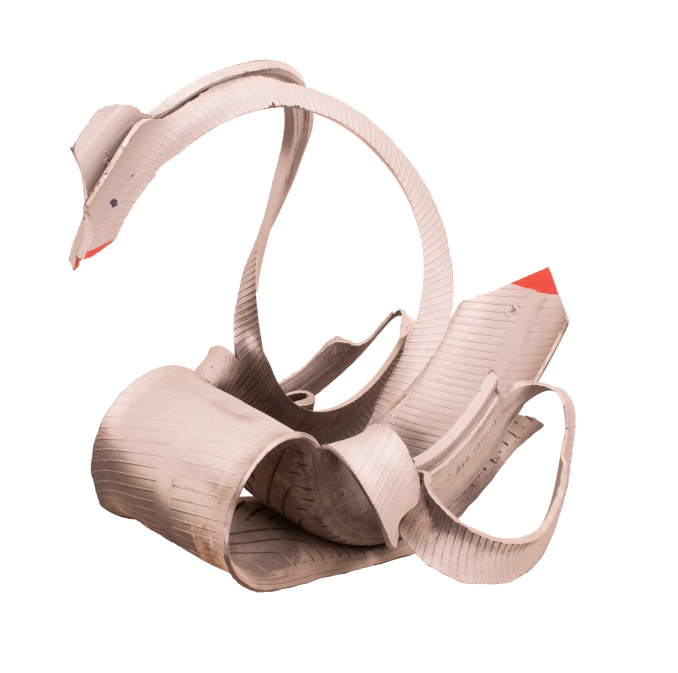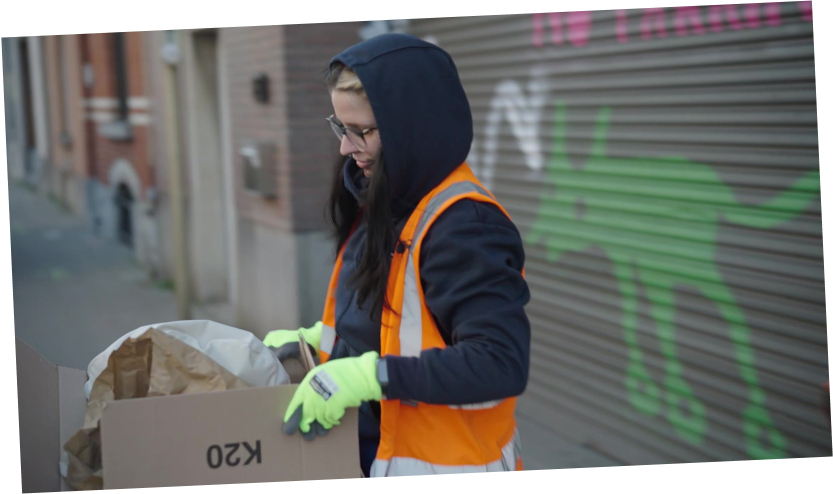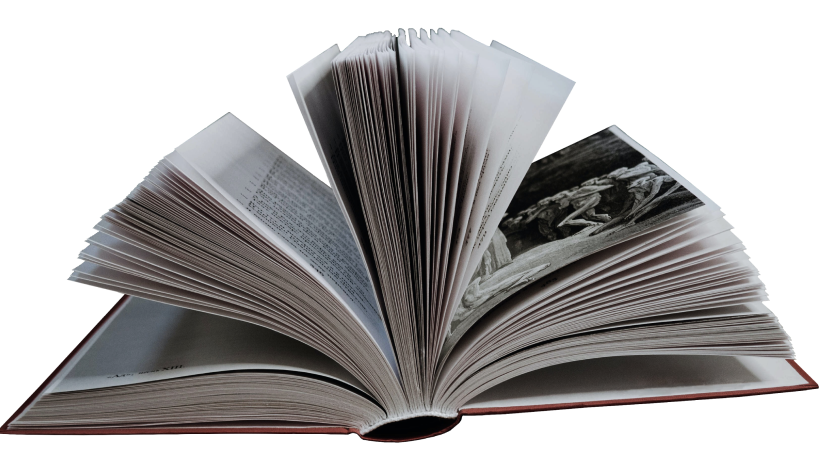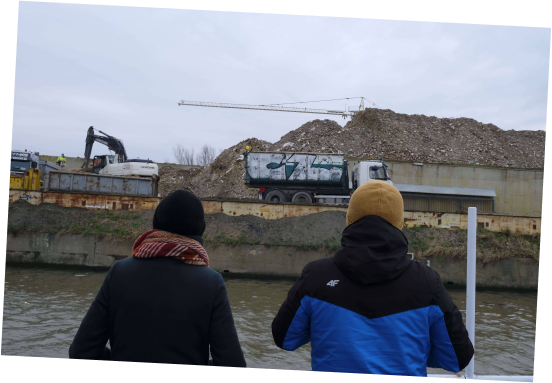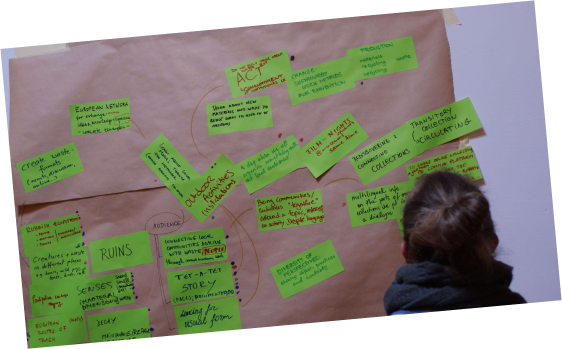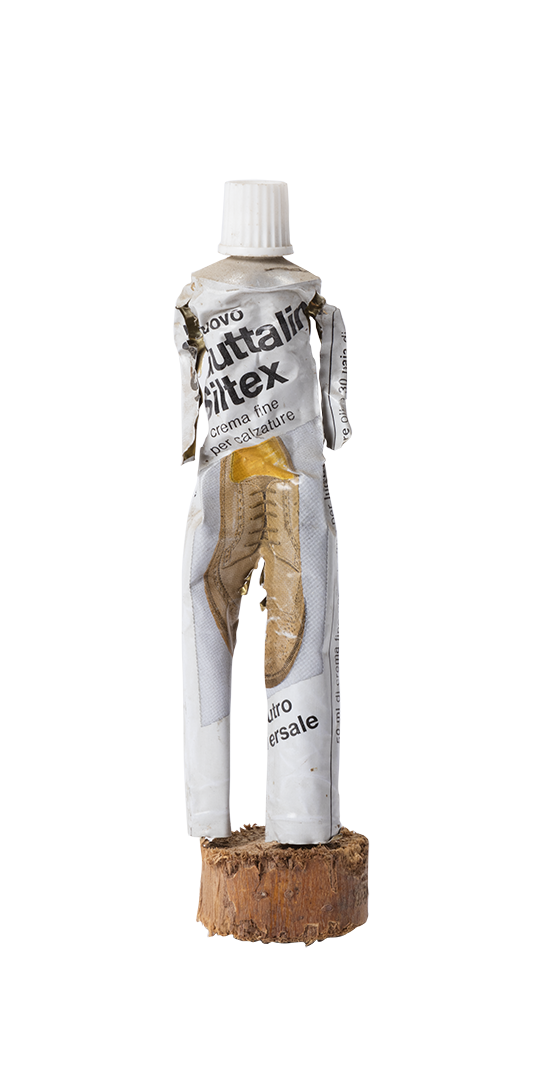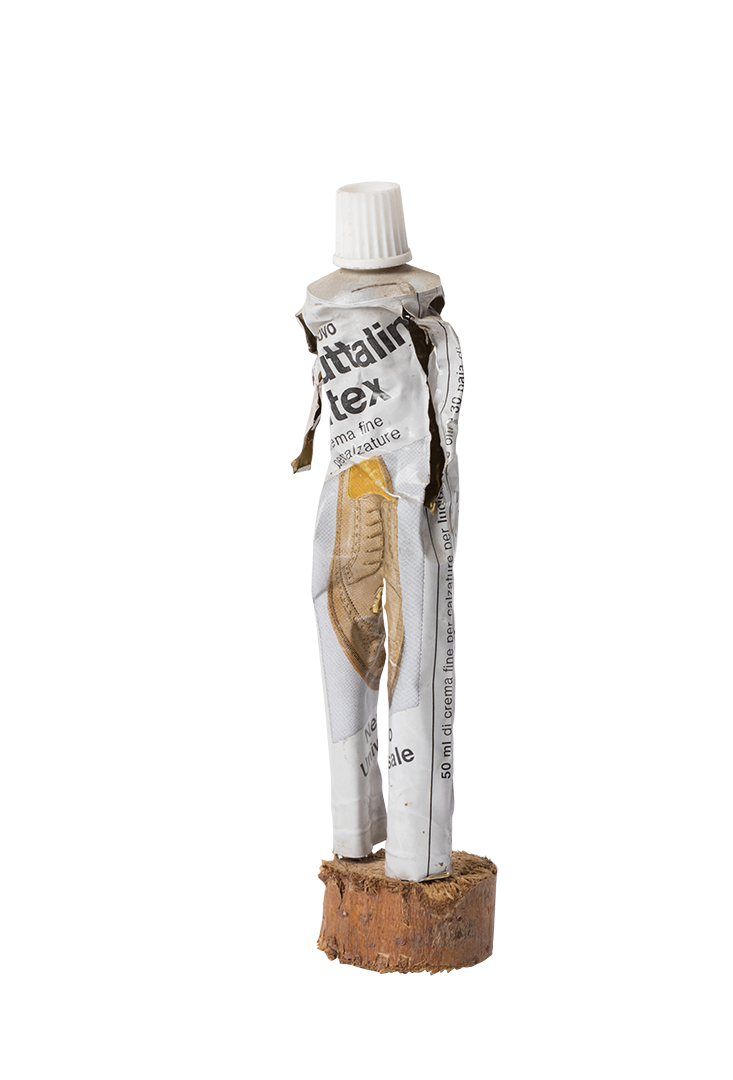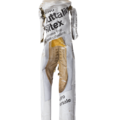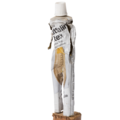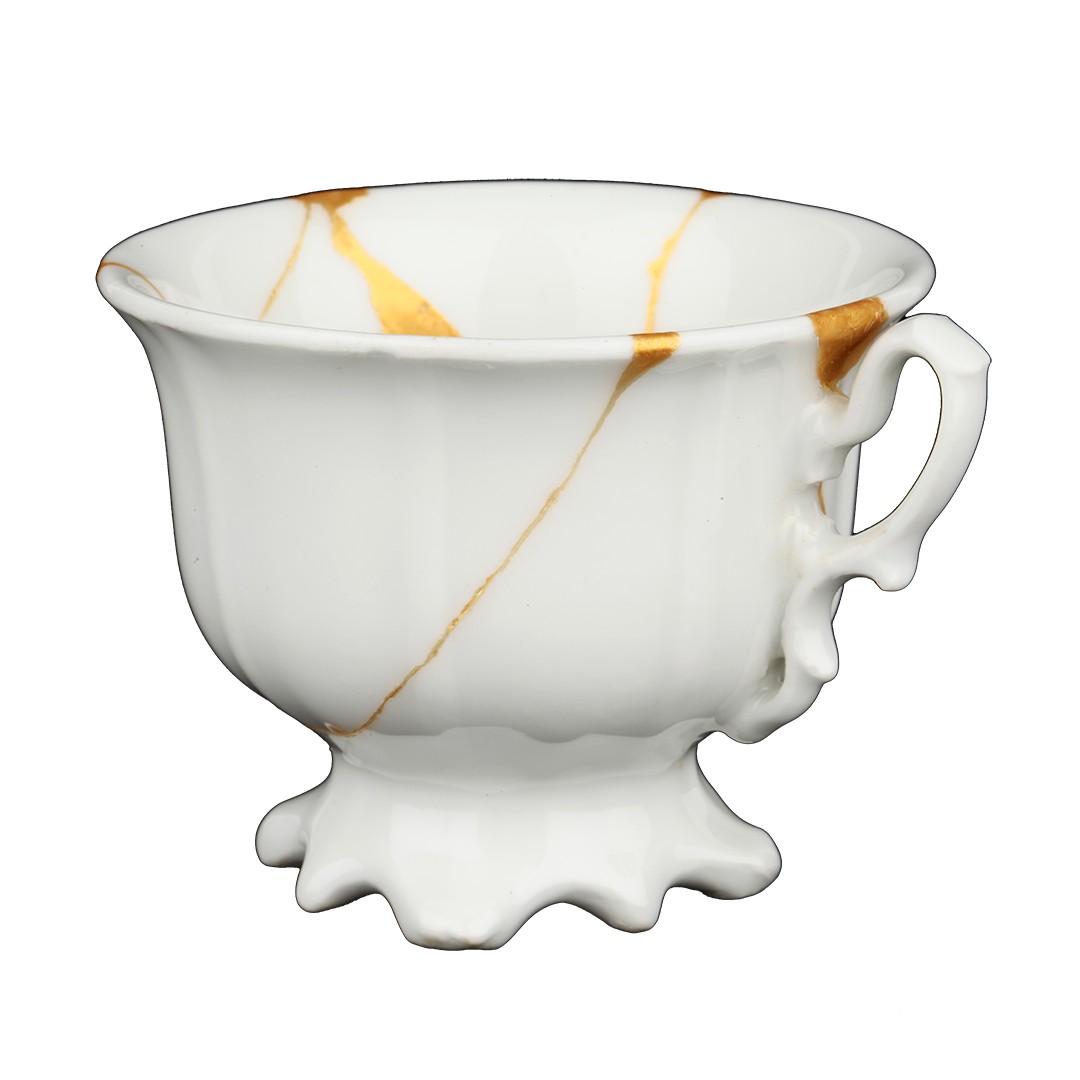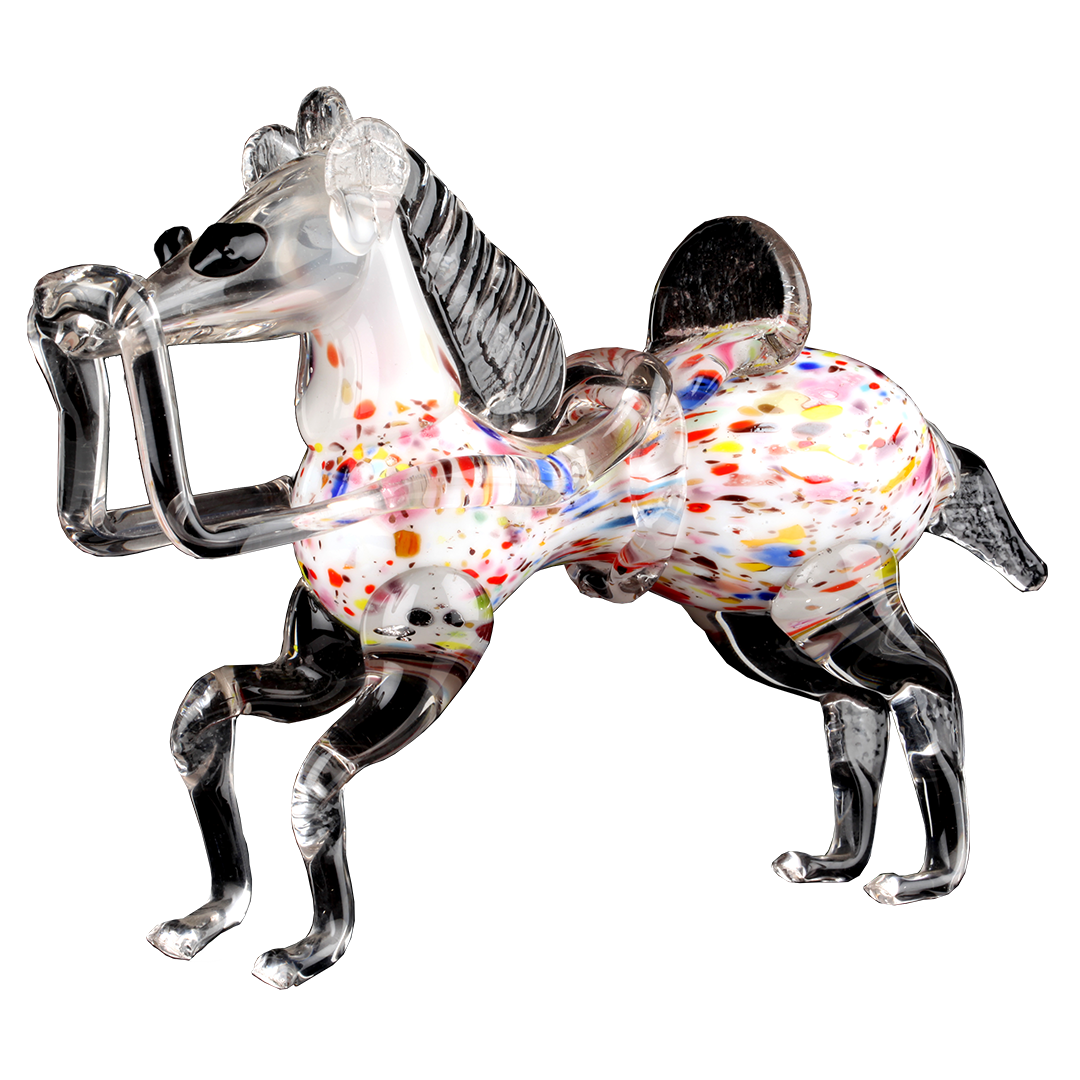Artist/Maker Ettore Guatelli
Date Production/Creation
Terminus post quem 1990
Entry in the museum collection
Terminus post quem 1990
Place of origin
Ozzano Taro, Collecchio, Parma, Emilia Romagna, Italy, Europe
Current location
Ettore Guatelli Museum foundation, Ozzanno Taro, Italy
Material
Upcycling a shoe cream tube
Dimension
Cm: Width 5 – height 6 – base diameter 4
Inventory Number
Keyword Art Self-made/DIY Upcycling
Copyright @Ettore Guatelli Museum Foundation
Status On display
Image Credit Mauro Davoli
A rubbish education has its benefits. How can we learn to learn from our waste?
What is this object about, who are the people behind it?
Mister Guttalin is a figurine that Ettore Guatelli himself crafted by upcycling a used shoe cream tube. It illustrates the way in which something can be forged from nothing. A small personal "work of art" such as this can restore in the hands of its creator the joy of making things – just as children used to do when they would fashion makeshift toys, back when junk offered endless possibilities and could become whatever their imagination conjured up. Guatelli tells us that this is where the fun lays: in taking inspiration from "scrap" and rediscovering the joy of invention.
What places is this object related to, how European/transnational is it?
Through the objects he collected for his museum, Ettore Guatelli, museographer and primary school teacher, devised an educational philosophy based on the direct observation of things – one that we might term "object-based education". In his lessons at primary schools in Ozzano Taro or in the many conference talks he gave, Guatelli would – without realising it – adopt an approach similar to the modern-day method associated with the pedagogy of Bruno Munari and Maria Montessori, placing objects at the heart of his narrative, using them as props to illustrate the value and significance of the stories he was telling.
Why and how did this object arrive in the museum’s collection?
In the late 1990s, Ettore Guatelli unfortunately fell ill and had to undergo a course of chemotherapy that confined him to his bedroom for a period of convalescence. It was during this time that creations like Mister Guttalin took shape, along with all the figurines he crafted from bits and bobs found in nature or around the home, such as twigs, walnut kernels, bones, pebbles or cork stoppers. Guatelli filled whole drawers, boxes and containers with these small components and, piece by piece, his hands brought to life the mass of miniature people that can now be found on display in the playroom.
What is the relation of this object to waste?
Guatelli’s handmade figurines (including Mister Guttalin) are exhibited in the playroom, where they are arranged and displayed side by side on shelves on the right-side wall. The playroom is a special part of the museum, probably because it is this room that tells the story of Guatelli’s research method, where visitors see with their own eyes just what Guatelli was seeking to do: to collect objects from times long gone by through to the distant future. Here we find not only figurines, but other toys too – mills made from walnut shells, pick-up trucks, carousels and miniature aeroplanes – all made by children who would look at a simple piece of wire and imagine a world.

